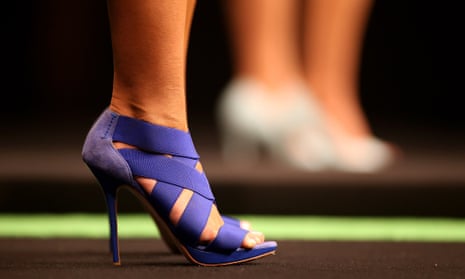A Swedish firm believes that it can take away the frustration of bringing home shoes that don’t fit by using spatial awareness cameras to provide a 3D scan of exactly what each person’s foot looks like.
Volumental, based in Stockholm, has developed software to take a lifelike image of the foot, which can then be used to make either shoes to fit exactly or find ones which are more suitablefrom the shelves.
“Our vision is that the system of going around the stores, trying on lots of shoes or jeans and different products and having a problem of not knowing whether you are medium or large ... I think that system will be completely gone in 10 years. Instead it will be size me,” co-founder Caroline Walerud says.
“You will only be given products that fit your body shape. We are going to create that standard for how to size people. In the first, for shoes and then for other products.”
The technology emerged from the Royal Institute of Technology in Stockholm where researchers were working on trying to make robots “see” by using cameras used for gaming consoles in 2012.
They started by filming around objects like a table or a sofa so they could draw up a 3D image. They then looked at how to commercialise the technology and settled on shoes.
“The concept was to 3D scan anything, we can digitise the world. The ‘YouTube of 3D’. That was a very wide vision and it didn’t really solve a problem, it was just the technology basically looking for a solution,” Walerud says.
“ I would say we have done a huge shift there in really thinking about the market and the customers.”
The software uses depth cameras such as Microsoft’s Kinect or Intel’s RealSense, which are connected to computers and then moved around the foot in order to build the 3D image.
“You film around your face or your foot and you get a direct 3D model of your foot with all of the measurements. We analyse it and output the measurements you need to create a custom product,” she says.
“It uses both the intelligence from the sensor as well as previous intelligence we have gathered about feet in the background.
When the 3D image is stored in the computer, it can then be used to make custom products which fit exactly instead of being slightly outsized.
In footwear, the company has found an area where the 3D scanning would reach a need, said Walerud, as many people find there are inconsistencies in size due to the shape – not the length – of the foot. A typical complaint is that brands have different sizings. “It is very hard for people to describe the shape of a foot however you do it,” she said.
Volumental aims to commercialise their software in two ways. Firstly brands will have hardware in the store where the exact profile of someone’s foot can be drawn up. The stage after that is to develop a consumer product where people will be able to use a laptop or phone to put together a 3D image from home.
As well as being able to create personally customisable shoes, the software would also be able to find a shoe that is a better fit for the customer, said Walerud. The company is currently working with Italian shoe producer Scarosso on a system where people will be able to scan their feet and is expected to announce link-ups with other firms in the future.
The most immediate problem to face the company is one of hardware. Without depth cameras becoming standard in mobile phones and laptops, the software appears ahead of its time.
Walerud estimates that the cameras will become typical in mobile phones by 2017 when they will also be used for enhanced security and the ability to navigate screens without actually touching the device.
Another concern is that customisable shoes may be seen as something for specialist shoemakers and not for mass market brands. Walerud says that new manufacturing techniques will allow for specially designed shoes to be made at cheaper prices in the future.
“The biggest mountain here is we are creating something new. We are trying to change how people design, manufacture, buy and sell products. All those things that are trying to change that paradigm means that there is a lot of unknowns there still,” she says.
The company has 20 staff in its Stockholm headquarters and has received $5m (£3.18m) in funding so far. How it intends to make money through the software is by licensing it out. When a consumer product comes out, retailers who make shoes for people who scan their details via the application will be charged and not the customer, said Walerud.
A bespoke world
While they are starting with feet, Volumental also work on 3D scanning the face with the view to make glasses, helmets and earphones bespoke to the individual body. Personalised shoes could also be aided with 3D weaving, a concept where the exact profile of a person’s shoe sole can be created in a new technique made by Nigerian American designer Oluwaseyi Susanna.

Comments (…)
Sign in or create your Guardian account to join the discussion